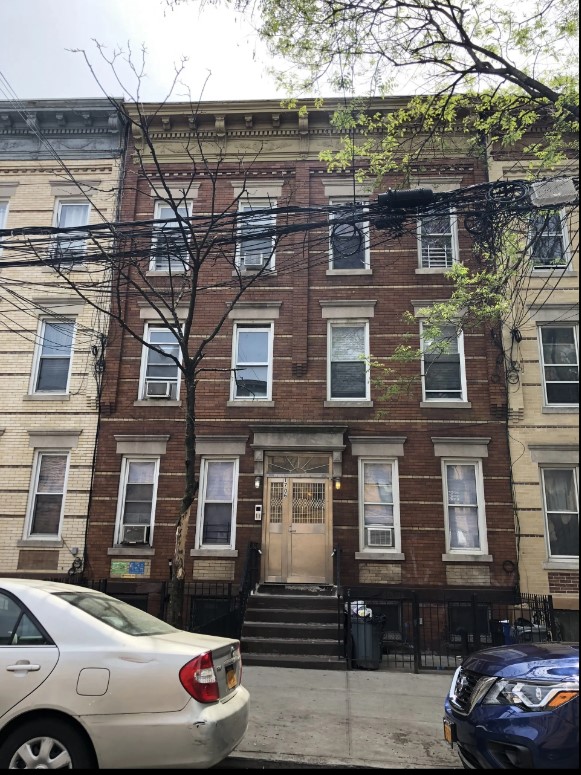Setting the Stage: The Real Estate Landscape in the 21st Century
The dawn of the 21st century heralded a new era for the real estate industry. With urbanization at its peak and the global population on a steady rise, the demand for real estate skyrocketed. However, with this boom came challenges. Traditional methods of property management, investment, and development started showing cracks in their efficacy.
The real estate market, known for its resilience, began to experience rapid changes. From the rise of smart homes equipped with the latest technology to the demand for sustainable living spaces, the industry was in flux. This wasn’t just a phase; it was an evolution. An evolution that demanded adaptability and, more importantly, innovation.
In such a transformative age, merely keeping up wasn’t enough. To truly thrive, one had to anticipate, adapt, and innovate. The real estate moguls of the past had relied on tried and tested formulas, but the 21st century demanded a fresh approach. It was clear: innovation wasn’t just a buzzword; it was a necessity.
Albert Dweck’s Vision for Duke Properties

In the midst of this dynamic landscape, Albert Dweck saw an opportunity. While many were hesitant to deviate from the norm, Dweck recognized that the future of real estate lay in embracing change. But this wasn’t about jumping on the latest trend; it was about a deep understanding of the market, foresight, and the courage to take calculated risks.
In the early days of Duke Properties, the real estate world was a different beast. The market was saturated with players adhering to age-old practices. But Dweck wasn’t one to follow the herd. He saw what many didn’t: a gap in the market for a real estate firm that wasn’t afraid to think outside the box. A firm that prioritized innovation not as a mere strategy but as its very ethos.
Crafting a vision for Duke Properties, Dweck aimed to merge the foundational principles of real estate with the boundless possibilities that innovation offered. He envisioned a company that would not just adapt to the changing times but would be a trailblazer, setting benchmarks for others to follow.
This vision wasn’t just about integrating the latest technology or adopting new investment strategies. It was holistic. From sustainable property development to community-centric projects, Dweck wanted Duke Properties to redefine what real estate could be. He aimed to create spaces that weren’t just structures but experiences. Homes that weren’t just about living but about thriving.
In essence, Albert Dweck’s vision for Duke Properties was clear: to be at the forefront of the real estate revolution. To be a beacon of innovation in an industry on the cusp of change. And as the subsequent success of Duke Properties has shown, with the right vision and an unwavering commitment to innovation, the sky’s the limit.
Embracing Technological Advancements
In an age where technology has permeated every facet of our lives, the real estate sector is no exception. For Duke Properties, under the visionary leadership of Albert Dweck, technology wasn’t just an add-on; it was an integral part of the business model.
The property management landscape witnessed a seismic shift with the integration of digital tools. Gone were the days of manual record-keeping and tedious paperwork. Duke Properties harnessed the power of software solutions that streamlined operations, ensuring efficiency and accuracy. But this was just the tip of the iceberg.
Enter virtual tours. In a bustling metropolis like New York City, where time is of the essence, virtual property tours emerged as a game-changer. Potential investors and tenants could now experience a property without setting foot in it. This not only widened the reach of Duke Properties but also offered unparalleled convenience to clients.
But why stop at virtual tours? Albert Dweck recognized the potential of Artificial Intelligence (AI) and data analytics in revolutionizing real estate investments. By leveraging AI, Duke Properties could predict market trends, assess property values with pinpoint accuracy, and tailor investment strategies based on real-time data. This data-driven approach set Duke Properties apart, ensuring informed decisions that maximized returns.
Innovative Investment Strategies
In the volatile world of real estate, a one-size-fits-all approach is a recipe for disaster. Albert Dweck, with his pulse on the market’s heartbeat, realized the importance of diversification early on. For Duke Properties, this meant a multi-pronged investment strategy that ensured resilience against market downturns.
While many real estate giants chased the big-ticket properties, Duke Properties zagged. They saw potential where others saw risk: emerging neighborhoods in New York City. These were areas on the cusp of a renaissance, neighborhoods that were witnessing a surge in demand due to their unique blend of cultural vibrancy and affordability.
By targeting these emerging neighborhoods, Duke Properties tapped into a goldmine. Areas like Bed-Stuy, Crown Heights, and Bushwick in Brooklyn, or Ridgewood in Queens, were transforming. They were becoming hubs for the young, the creative, and the ambitious. And with this demographic shift came a demand for innovative living spaces.
Albert Dweck’s genius lay in recognizing this shift and positioning Duke Properties to not just capitalize on it but to drive it. By investing in these neighborhoods, they weren’t just buying properties; they were shaping communities. This forward-thinking approach ensured that Duke Properties wasn’t just a real estate company; it was a trendsetter, a beacon of innovation in the concrete jungle of New York City.
Sustainability: A Forward-Thinking Approach
In a world grappling with the consequences of climate change, sustainability is no longer a buzzword; it’s a clarion call. For Duke Properties, sustainability wasn’t just about ticking a box; it was about future-proofing their investments and aligning with a global movement.
The real estate sector, historically, has been a significant contributor to carbon emissions. Albert Dweck, always one step ahead, recognized the need for a paradigm shift. Under his leadership, Duke Properties began its journey towards green and sustainable property development. This wasn’t just about installing solar panels or rainwater harvesting systems; it was a holistic approach that considered every aspect of construction and maintenance.
From using eco-friendly construction materials to designing properties that maximized natural light and ventilation, every decision was taken with an eye on sustainability. But this wasn’t just an environmental decision; it was a strategic one. A growing segment of the market, especially in a city as progressive as New York, was becoming environmentally-conscious. They weren’t just looking for homes; they were looking for sustainable living solutions. By offering green properties, Duke Properties catered to this burgeoning demographic, ensuring their properties were in high demand.
Community-Centric Development: A Novel Approach
Real estate, at its core, is about people. It’s about creating spaces where memories are made, where dreams are realized, and where communities thrive. Albert Dweck, with his innate understanding of human psychology, realized that building properties wasn’t enough; building communities was the key.
This community-centric approach was a departure from the traditional real estate model. Instead of viewing properties as standalone units, Duke Properties viewed them as part of a larger ecosystem. This meant considering the community’s needs at every step of the development process.
From ensuring properties had communal spaces where residents could interact to partnering with local businesses to offer residents exclusive deals, every decision was taken with the community in mind. This approach had multiple benefits. Not only did it foster a sense of belonging among the residents, but it also ensured that Duke Properties’ developments became integral parts of the neighborhoods they were situated in.
The long-term benefits of this approach were manifold. Properties that fostered strong communities witnessed lower tenant turnover rates, higher rental yields, and a positive brand association. In a city as transient as New York, where the hustle and bustle can often feel isolating, Duke Properties offered an oasis of community and connection. It wasn’t just about brick and mortar; it was about heart and soul.
Challenges in Implementing Innovative Strategies
Innovation, while a buzzword in many corporate circles, is often met with resistance when it comes to actual implementation. The real estate sector, steeped in tradition and established methods, is no exception. For Duke Properties, charting a path of innovation was not without its challenges.
One of the primary hurdles was resistance to change. This resistance came both from within the organization and from external stakeholders. Traditionalists questioned the need for digital tools in a sector that had relied on face-to-face interactions for centuries. There were concerns about the feasibility of sustainable construction methods and whether they would be cost-effective.
However, under the steadfast leadership of duke properties albert dweck, the company navigated these challenges with aplomb. Albert’s vision was clear, and he knew that for Duke Properties to remain a leader in the real estate sector, innovation was not just desirable but essential. Through a combination of open dialogue, training sessions, and pilot projects, he gradually brought the entire organization on board.
Externally, Albert leveraged his reputation and the trust he had built over the years to assuage concerns. He ensured that stakeholders were kept in the loop at every stage and that their feedback was taken into account. This inclusive approach turned potential resistors into advocates for change.
Albert Dweck on the Importance of Continuous Learning
In a rapidly evolving world, resting on one’s laurels is a recipe for obsolescence. Albert Dweck, with his finger always on the pulse of global real estate trends, recognized this early on. For him, continuous learning was not just a personal mantra but a philosophy he instilled throughout Duke Properties.
Albert’s commitment to staying updated is evident in his own educational journey. From his foundational education to specialized courses from esteemed institutions like Harvard Online Business School, he has always prioritized learning. But more than that, he has ensured that this culture of continuous learning permeates Duke Properties.
Under his leadership, the company regularly organizes workshops, training sessions, and seminars for its employees. These sessions cover a range of topics, from the latest in sustainable construction methods to emerging market trends. Albert believes that an informed team is an empowered team, and this belief has been a cornerstone of Duke Properties’ success.
Furthermore, Albert encourages his team to think beyond the confines of the real estate sector. By drawing inspiration from diverse fields and industries, Duke Properties ensures that its strategies are not just innovative but truly groundbreaking. In a sector where many are content to follow the herd, Duke Properties, under Albert’s leadership, blazes its own trail.
The Results: How Innovation Translated to Success
Innovation is not just about introducing new ideas; it’s about translating those ideas into tangible results. For Duke Properties, the innovative strategies championed by Albert Dweck have yielded impressive outcomes.
The company’s growth trajectory over the past years is a testament to the power of forward-thinking. From a modest start, Duke Properties has expanded its portfolio, now managing several hundred units primarily in the New York metro area. This growth has not been haphazard. It’s been the result of carefully implemented innovative strategies.
One of the standout examples of innovation paying off has been Duke Properties’ focus on emerging neighborhoods in New York City. By identifying areas like Bed-Stuy, Crown Heights, and Bushwick early on, the company was able to invest in properties that have since seen a significant appreciation in value. This foresight, combined with a community-centric approach, has resulted in both financial gains and the establishment of thriving communities.
Similarly, the company’s emphasis on sustainability has not only catered to a growing market demand but has also positioned Duke Properties as a leader in green real estate solutions. Their sustainable properties, with their reduced carbon footprints, attract a premium, further boosting the company’s bottom line.
Conclusion: The Future of Duke Properties and the Continued Role of Innovation
As we look towards the future, one thing is clear: Duke Properties is not resting on its past successes. Under the visionary leadership of Albert Dweck, the company is poised to continue its innovative streak, further solidifying its position as a leader in the real estate sector.
Albert’s vision for the next decade is expansive. He sees Duke Properties venturing into new markets, experimenting with cutting-edge construction techniques, and further deepening its commitment to community development. He believes that the real estate sector will continue to evolve, and for companies to stay relevant, they must be willing to adapt and innovate.
The ongoing commitment to innovation is not just about staying ahead of the curve. It’s about setting the curve. For Duke Properties, innovation is more than a strategy; it’s a way of life. And as the company looks to the future, it does so with the confidence that comes from a track record of excellence and the excitement of endless possibilities ahead.

